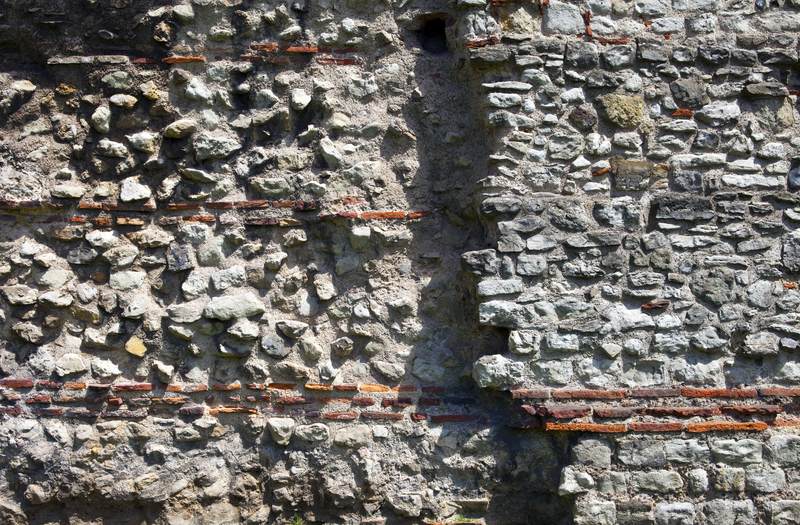Master the Art of Cleaning Stovetops with Burnt-on Residue
Posted on 26/05/2025
Master the Art of Cleaning Stovetops with Burnt-on Residue
Burnt-on residue on stovetops is a widespread problem for home cooks and kitchen enthusiasts. Removing those tough, stuck-on food particles and greasy marks can seem daunting. Yet, with the right approach and knowledge, even the most stubborn burnt stains become manageable. In this comprehensive guide, you will discover expert tips, proven techniques, and practical solutions for cleaning stovetops with burnt-on residue. Whether you're dealing with a glass, ceramic, induction, or classic coil gas stove, this article will arm you with everything you need to restore your cooktop's shine.

Why Burnt-on Residue Forms on Stovetops
Cooking mishaps, spilt sauces, and over-boiling accidents often leave behind unsightly, hardened patches on stovetops. Burnt-on residue is an inevitable outcome of regular kitchen use. When food, oils, or sugars heat past their smoke points, they break down and stick stubbornly to stovetop surfaces, making simple wiping ineffective. Understanding the causes helps prevent future buildup and informs the best cleaning approach.
- High Heat - Rapid heating can cause food spills to carbonize instantly, bonding them to the surface.
- Sugary Spills - Sugar, syrups, and sweet sauces caramelize quickly, crystallizing into tough, sticky stains.
- Oil and Grease Splatter - Grease turns into a sticky film when repeatedly exposed to flame or hot glass and ceramic.
- Delayed Cleaning - The longer residue sits, the harder it becomes to remove -- acting promptly is crucial.
Essential Tools and Materials for Cleaning Your Stovetop
Before you tackle burnt-on residue on your cooktop, gather the necessary cleaning supplies. Equipping yourself with the right tools and solutions simplifies the process and prevents surface damage.
Common Cleaning Tools
- Soft Microfiber Cloths - For gentle wiping and polishing.
- Non-abrasive Scrub Pads or Sponges - Removes tough residue without damaging surfaces.
- Plastic or Silicone Scrapers - Safe for glass and ceramic stovetops.
- Old Toothbrush or Small Detail Brush - Perfect for cleaning tight corners and crevices.
- Gloves - Protect hands from harsh chemicals and hot surfaces.
Effective Cleaning Solutions
- Baking Soda - Naturally abrasive yet gentle for stubborn stains.
- White Vinegar - Breaks down grease and adds shine.
- Lemon Juice - Cuts through odors and dissolves light burnt-on residue.
- Dish Soap - Degreases and softens general grime.
- Commercial Stovetop Cleaner - Formulated for specific stovetop materials.
Step-by-Step Guide: How to Clean Stovetops with Burnt-on Residue
Preparation: Safety First
Always ensure the stovetop is completely cooled down before cleaning to avoid burns. If cleaning for the first time, check the manufacturer's instructions for recommended cleaning methods and avoid using metal tools that can scratch or damage the surface.
Initial Surface Cleaning
- Remove Grates or Burner Covers: For gas stovetops, take off any grates or removable burner covers and soak them in hot, soapy water.
- Wipe Away Loose Debris: Use a dry microfiber cloth or paper towel to remove any crumbs, dust, or leftover food.
- Apply a Degreaser: Spray the stovetop with a mild degreasing solution or soapy water and let it sit for five minutes.
- Wipe Down: Use a damp cloth to remove the loosened grime.
Targeting Burnt-On Stains
Sometimes surface cleaning isn't enough for stubborn burnt-on messes. Here's how to tackle those difficult areas:
- Create a Cleaning Paste: Mix baking soda and water to form a thick paste.
- Apply Generously: Spread the paste over the burnt areas and allow it to sit for at least 20-30 minutes. The baking soda will help break down the burnt residue.
- Scrub Gently: Use a non-abrasive scrub pad or sponge to gently rub the area in circular motions. Avoid using steel wool, as it can scratch most stovetop surfaces.
- Use a Plastic Scraper: For glass, ceramic, or induction stovetops, carefully use a plastic or silicone scraper at a 45-degree angle to lift stubborn, loose pieces.
- Rinse and Wipe: Dampen a clean microfiber cloth to remove the paste and residue, repeating as needed.
For Extra Tough Burnt-on Residue
- Vinegar and Baking Soda Reaction: After applying and scrubbing the baking soda paste, spray the area with vinegar. The fizzing reaction helps lift the residue. Wait for several minutes before wiping clean.
- Lemon Juice Boost: For greasy, sticky stains, try rubbing the area with a cut lemon. The acids will help dissolve the stain and leave a fresh scent.
- Repeat If Necessary: Particularly tough spots may require a second application or a longer sit time for the paste.
Deep Cleaning Different Types of Stovetops
Glass and Ceramic Cooktops
- Only ever use plastic or silicone scrapers--never metal.
- Avoid harsh chemicals like chlorine bleach or ammonia, which can damage glossy surfaces.
- Specialized glass stove top cleaners are available for a streak-free, polished finish.
Gas Stovetops
- Remove and soak grates and burner covers in hot, soapy water to dissolve old, burnt food.
- Use a toothbrush or small brush to clean hard-to-reach burner crevices.
- Ensure all components are completely dry before reassembling.
Coil Electric Stovetops
- Unplug coils and remove drip pans for thorough washing in the sink.
- Wipe the main stovetop with baking soda paste, rinse, and dry fully before reattaching coils.
Induction Stovetops
- Use only products safe for induction glass.
- Never use sharp objects. Stick to microfiber and soft scrubbing pads.
- Wipe spills promptly, as induction surfaces tend to remain cool and less prone to burning residue, but sugars and syrups can still damage the finish.
Homemade vs. Commercial Stovetop Cleaners
A key decision for anyone seeking to master the art of cleaning stovetops with burnt-on residue is choosing between homemade and commercial cleaning agents. Both have pros and cons:
- Homemade solutions, like vinegar and baking soda, are eco-friendly, non-toxic, and affordable. They work wonders for everyday messes and light stains.
- Commercial stovetop cleaners are formulated for deep cleaning, stubborn residues, and specific surfaces. Many are scratch-resistant and leave a streak-free shine, though some contain chemicals that require good ventilation and aftercare.
For most households, a combination of both works best. Start with gentle, homemade cleaners and escalate to commercial options for extremely burnt-on stains.
Pro Tips for Preventing Burnt-on Residue
While knowing how to clean stovetops with burnt-on residue is invaluable, prevention reduces the frequency and intensity of future deep cleans. Incorporate these habits into your routine:
- Wipe Spills Immediately: Whenever possible, wipe up spills while the stovetop is still warm but not hot. Early intervention prevents buildup.
- Use Splatter Guards: Shield burners and glass from oil and sauce splashes with lids or splatter screens.
- Deep Clean Weekly: Set aside time for regular thorough cleaning rather than waiting for stains to accumulate.
- Keep Cookware Bottoms Clean: Residue on pots and pans can transfer during cooking, so wipe them before use.
What to Avoid When Cleaning Burnt-on Stovetops
Cleaning improperly can lead to scratched, discolored, or damaged stovetops. Keep these critical don'ts in mind:
- No abrasive pads or steel wool on glass or ceramic. These elements cause fine scratches and dull the surface.
- Don't use harsh chemical cleaners meant for bathrooms on your stovetop. They may corrode or harm the finish, especially on glass and induction models.
- Never soak electrical elements or let water seep inside burners and knobs.
- Don't mix cleaning products, particularly bleach and ammonia, as their fumes are toxic.

Frequently Asked Questions About Cleaning Stovetops with Burnt-on Residue
Is it safe to use razor blades on a glass stovetop?
While some manufacturers approve the gentle use of flat razor blades for specific glass cooktops, misuse can lead to permanent scratches. Always check your user manual and opt for plastic scrapers when in doubt.
How often should I deep clean my stovetop?
*Weekly maintenance* is best for busy households, but always *wipe spills immediately* to prevent burnt residue from accumulating.
Why does burnt-on sugar seem impossible to remove?
Sugar crystallizes at high heat and fuses to stovetops, especially on smooth glass. Baking soda and vinegar are effective, but for severe cases, a specialized cleaner or repeated application may be necessary.
Conclusion: Enjoy a Spotless Stovetop with Confidence
Cleaning burnt-on residue from your stovetop may seem tedious, but with patience and the right strategy, you can maintain an immaculate kitchen. From simple stains to deeply burnt-on gunk, the methods outlined here will help you master the art of cleaning stovetops with burnt-on residue.
Remember to act quickly, use the best tools and techniques for your stovetop type, and don't neglect regular maintenance. A spotless stovetop not only enhances your kitchen's appearance but also supports healthy, enjoyable cooking for years to come.
Now that you're equipped with expert knowledge, roll up your sleeves and restore that brilliant shine to your stove -- no matter what mess the week brings!




